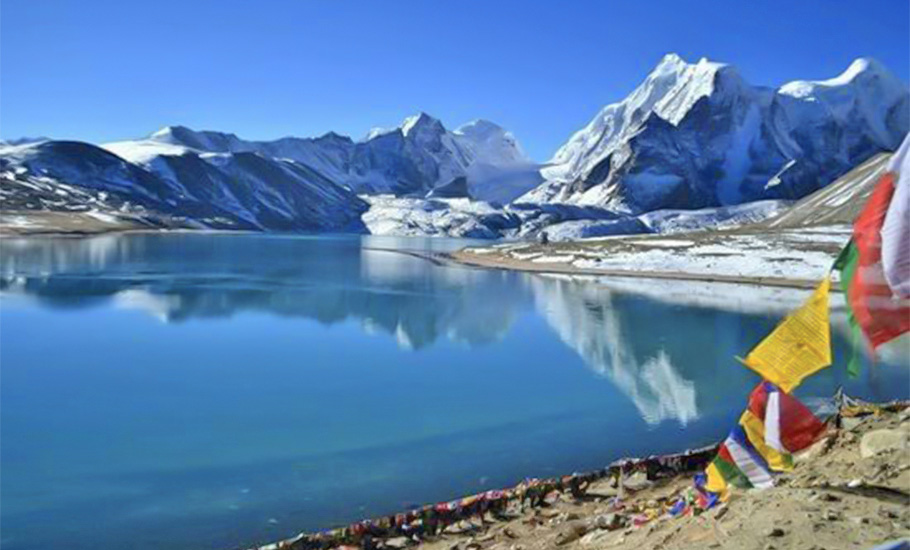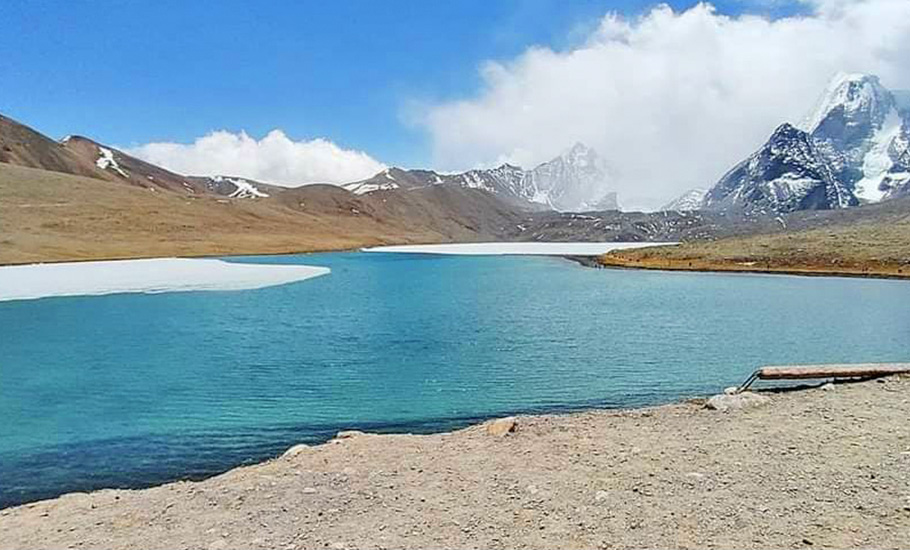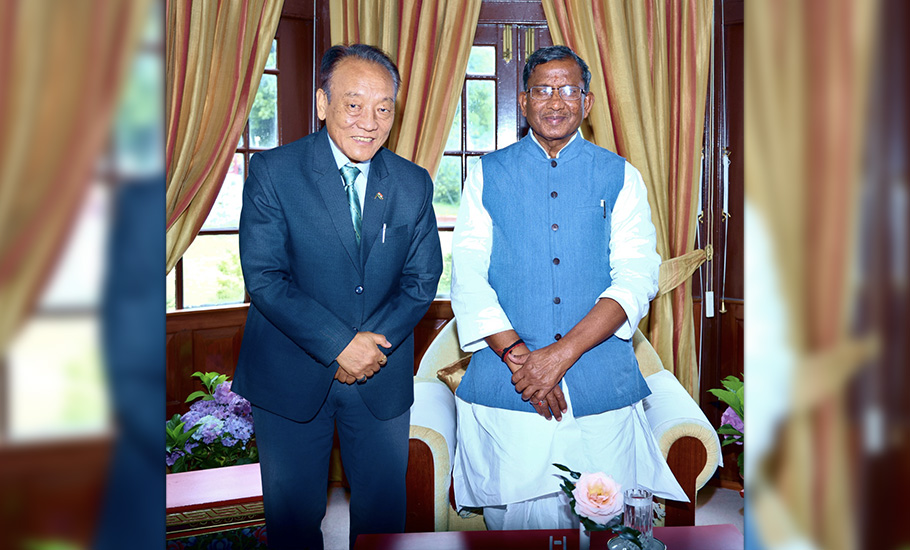
- Home
- News
- Analysis
- States
- Perspective
- Videos
- Education
- Entertainment
- Elections
- Sports
- Features
- Health
- Budget 2024-25
- Business
- Series
- Bishnoi's Men
- NEET TANGLE
- Economy Series
- Earth Day
- Kashmir’s Frozen Turbulence
- India@75
- The legend of Ramjanmabhoomi
- Liberalisation@30
- How to tame a dragon
- Celebrating biodiversity
- Farm Matters
- 50 days of solitude
- Bringing Migrants Home
- Budget 2020
- Jharkhand Votes
- The Federal Investigates
- The Federal Impact
- Vanishing Sand
- Gandhi @ 150
- Andhra Today
- Field report
- Operation Gulmarg
- Pandemic @1 Mn in India
- The Federal Year-End
- The Zero Year
- Premium
- Science
- Brand studio
- Newsletter
- Home
- NewsNews
- Analysis
- StatesStates
- PerspectivePerspective
- VideosVideos
- Entertainment
- ElectionsElections
- Sports
- Features
- BusinessBusiness
- Premium
- Loading...
Premium - India-Canada ties

Why at the Himalayan heights in Sikkim, ‘chelas’ are fighting over the legacy of ‘Gurus’

“Gurudongmar is a sacred lake. Some people say Guru Padmasambhava had visited this place, some say Guru Nanak was here,” your taxi driver, mostly hailing from Nepal, is likely to tell you this as your vehicle approaches the lake, high up in the Sikkim Himalayas. Located at an altitude of over 17,000 feet, Gurudongmar is a lake believed to have been twice blessed — by the great master...
“Gurudongmar is a sacred lake. Some people say Guru Padmasambhava had visited this place, some say Guru Nanak was here,” your taxi driver, mostly hailing from Nepal, is likely to tell you this as your vehicle approaches the lake, high up in the Sikkim Himalayas.
Located at an altitude of over 17,000 feet, Gurudongmar is a lake believed to have been twice blessed — by the great master of Tibetan Buddhism Guru Padmasambhava and also by the founder of Sikhism Guru Nanak Dev. Guru Padmasambhava was believed to have reached Sikkim in the 8th century while Guru Nanak was born in the latter half of the 15th century.
Sadly, the followers of these two religious leaders are today locked in a legal battle over the right to set up prayer centres of the two respective religious orders on the bank of the lake.
Buddhism has a long history in Sikkim. Among all the Indian states, Buddhism has the highest concentration in this Himalayan state bordering Tibet.
Also Read | Study finds majority of teenage students ignorant of vaping, e-cigarette ban
According to the 2011 Census, Buddhists form 27.4 per cent of the total population of the state. The Sikkim government has a Department of Ecclesiastical Affairs in the region, primarily looking after Buddhist monasteries, Sonam Lama being the Minister in-charge of the department.

Again, within Sikkim, the north district of Mangan, where the Gurudongmar Lake is situated, has the highest concentration of Buddhists. In fact, Buddhists constitute the majority in Mangan, making up 53.3 per cent of the population of the district, according to the 2011 Census.
Among all the Buddhist saints, Guru Padmasambhava is held in the highest esteem, next to Buddha himself, in these parts of the Himalayas. In fact, in gompas of some of the Buddhist sects, the idol of Padmasambhava is the main idol; even bigger than that of Buddha. Credited to be the man behind the propagation of Buddhism in these hills, his birth anniversary is a state holiday in Sikkim.
Padmasambhava had reputedly travelled far and wide in the trans-Himalayan region, including some of the most difficult corners of the mountains to pray in splendid isolation. Taktsang Monastery in Paro in Bhutan is one such destination. Also known as Tiger’s Nest, it is the place where Buddha had prayed in complete isolation. According to mythology, he had travelled there on the back of a tiger. In any case, it takes a lion-hearted person to pray along on that craggy and isolated hill-top. It is quite likely, therefore, that Padmasambhava had also visited the rarefied heights of the Gurudongmar Lake. There is much force behind the popular belief.
Also Read | Chandrayaan-3 launch: Far more than reaching for the Moon
Besides being a high-altitude lake, Gurudongmar has another unique feature. It is only about five kilometres away from the Tibetan Plateau, now under the occupation of China. The entire Sino-Indian border being a disputed area, there is a strong presence of the army in the north Sikkim region. The Sikh units of the army that have been stationed here, their officers and men, have carried with them the legacy of Guru Nanak to these parts, and the tradition of setting up gurdwaras in their places of posting.
There is a strong belief that Guru Nanak visited the Gurudongmar Lake area on his way to China and Tibet in 1516. The shepherds of the area gathered and complained to Guru Nanak about the shortage of drinking water in the area as the lake used to remain frozen. Legend has it that Guru Nanak touched the frozen lake with his stick and the ice melted and since then water has always been available in the portion of the lake which Guru Nanak touched with his stick. Footprints of Guru Nanak have also been located in the area.
Gurudongmar Lake made headlines in Sikkim on June 22 this year when the convener of Sikkim Bhutia Lepcha Apex Committee, Tseten Tashi Bhutia, who is also a member of the panel of community leaders of the National Commission for Minorities, submitted a memorandum to Sikkim governor Lakshman Prasad Acharya and sought his intervention in the Gurudongmar Lake issue under powers vested to the Governor under Article 371F of the Constitution.
“In the interest of Buddhist religion and national security… I would be very thankful if Your Excellency could intervene and end the controversy before it turns into a bigger problem which could harm national integrity and religious harmony,” Bhutia said in his memorandum.
The religious and communal overtone of the dispute could be a threat to the peaceful existence of all religious communities in the state.
Bhutia said the lake had been blessed by Guru Padmasambhava. The Chogyal and subsequently the Sikkim government had notified the place as one of the sacred Buddhist lakes. The memorandum referred to Guru Padmasambhava, also known as Guru Rinpoche in Sikkim, meditating and preaching at the site of the lake and recalled the historic role of the patron saint of Sikkim in promoting Buddhism in the entire trans-Himalayan region, including Nepal, Bhutan and Tibet.
“Guru Padmasambhava is a historical figure and not a mythological person,” Bhutia said. The history of his life is well-documented from his birth in Swat in Pakistan to his education at Nalanda University in Bihar and his religious endeavours in India, Nepal, Bhutan and Tibet. His visit to Sikkim in the 8th century is well-documented in the works of saints,” the memorandum said.
Bhutia’s memorandum referred to the old dispute over a place of worship on the bank of the lake. “A Buddhist shangphur (hut for lighting butter lamps, burning incense and offering prayers) was taken over and converted into a makeshift gurdwara,” he said.
In 1998, the Sikkim Forest Department wrote to the Indian Army about the structure having been built in contravention of the Forest Conservation Act. According to the memorandum, the dispute that had been subsequently settled with the holy site being handed over to the Buddhist community living in the region, was rekindled in 2017 with a writ petition being filed before the Sikkim High Court over which community should have the right over the holy site.
According to the memorandum, the Buddhist community in Sikkim is hurt by the contention of the Siliguri-based petitioners, casting doubt on the existence and life of Guru Padmasambhava. Sri Guru Singh Sabha, the petitioners, on the other hand, said in the petition, that in August 2017 holy relics of Sikhism were removed from the shrine without observing the due religious rites, and sought their restoration. The Sikkim Forest Department, as a respondent, mentioned about the structure coming up on reserve forest land.

The memorandum of Tseten Tasi Bhutia to the Governor of Sikkim was followed quickly by tweets from a leader of the Sikh community. Manjinder Singh Sirsa, a prominent Sikh politician and member of the BJP, tweeted on June 24: “With due respect to Guru Rinpoche, I would like to apprise him that there exists historical evidence that the Gurudwara Sahib is located at the site where both Guru Nanak and Guru Rinpoche are said to have paused while travelling through the region. As a leader of minorities, he (Tseten Tashi Bhutia) shouldn’t hurt the sentiments of other minorities.”
With the Sikkim Bhutia Lepcha Apex Committee claiming that special provisions for Sikkim under Article 371 F are under attack and representatives of the Sikh community complaining that the army has been dragged into a controversy, an amicable settlement of the dispute at an early date is important, particularly in view of the proximity of Gurudongmar Lake to the disputed China border.

